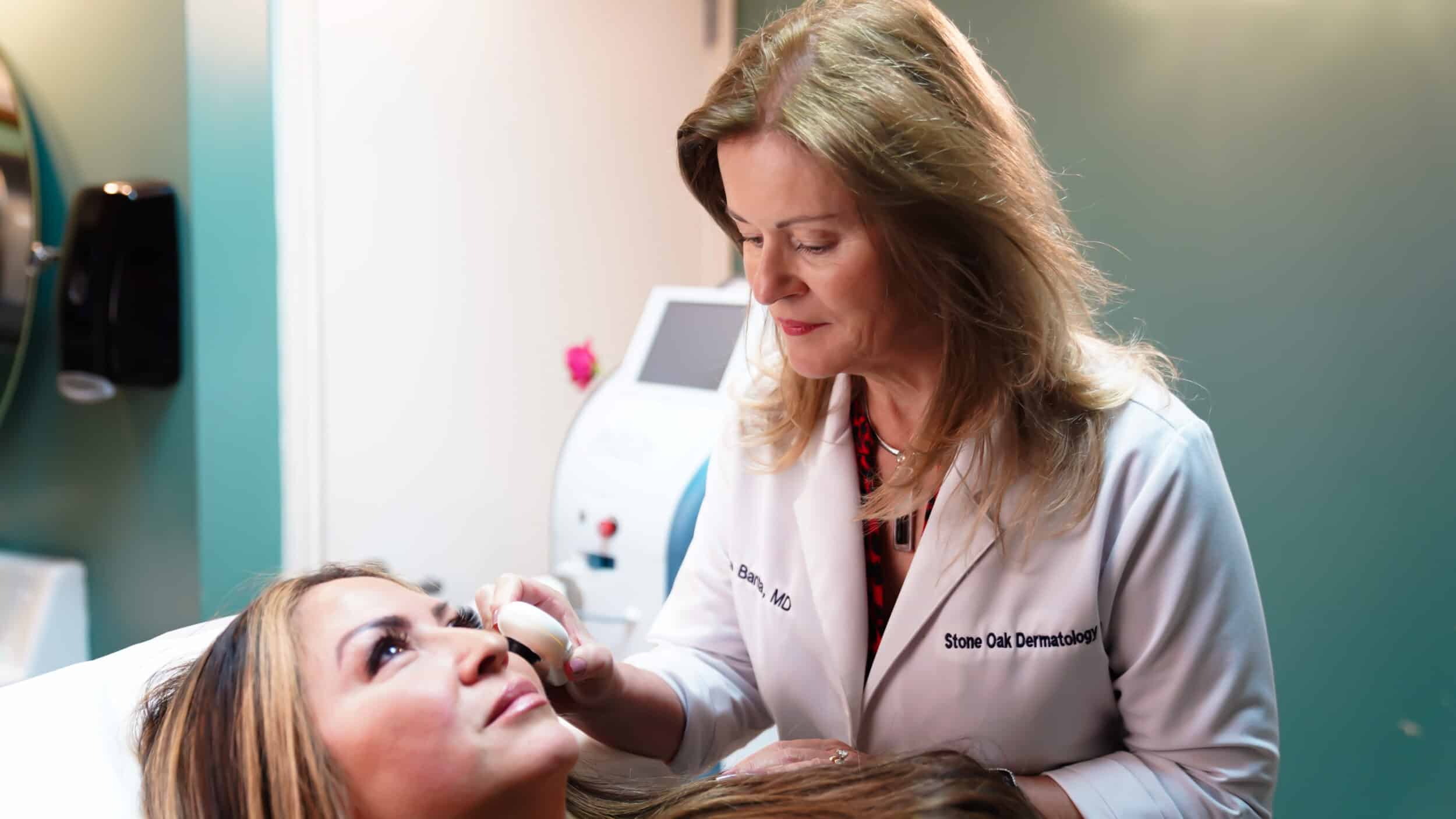
Dr. Banta performs full skin cancer screening on all new patients and on a yearly basis. Patients that have had a skin cancer will be screened every 3 to 6 months. Full exams provide a way to detect skin cancers early and thereby decrease morbidity and mortality. Education on proper sun protection will be provided. Patients should perform self-exams at home to detect any changes between exams. If any suspicious growths appear, an appointment should be made.
SKIN CANCER SCREENING IS RECOMMENDED ON A YEARLY BASIS.
I am Not Fair Complected. Do I Need a Skin Cancer Screening?
You may have heard that people with light skin and light hair or red hair have a higher risk of developing skin cancer. While this may be accurate, it does not mean that only people with fair complexions develop cancerous skin cells. Studies show that people of all skin tones and types can get skin cancer. Knowing this, you are more empowered to protect your health from this common disease. Skin cancer screenings are credited with a drop in mortality rates related to this disease because the earlier that cancerous growths are identified and treated, the better patient outcomes are.
What Happens During a Skin Cancer Screening with a Dermatologist?
It may sound inconvenient to schedule annual skin cancer screenings. However, this simple examination takes less than 15 minutes. During the exam, your doctor will carefully observe your skin from your head to your toes. Your comfort is important. Before your exam, you'll remove all of your clothes and put on a medical gown. Before beginning your exam, you'll have the chance to tell your doctor about any growths or moles that seem concerning to you. The exam will then be performed, possibly using a lighted instrument. Your doctor will start at one end of your body, either your scalp or your feet, and will observe your skin and any spots they see.
Skin cancer screenings don't take very long because your dermatologist is looking for very specific characteristics in the spots on your body. These include signs of asymmetry, irregular borders, abnormal coloring, and size. They will also look for precancerous growths called actinic keratoses.
I Got My Annual Skin Cancer Screening. Do I Still Need to Perform Self-Exams?
Even if you visit Dr. Banta every year for a skin cancer screening, you should still perform monthly self-exams at home. This exam also only takes a few minutes. You should be fully undressed when you do your self-exam so you can look at every part of your body. You'll need a full-length mirror and also a handheld mirror to perform your skin examination well, or may ask your partner to help you look at areas that you cannot readily see. If you notice growths that look abnormal or that have changed over time, contact our office to schedule a more thorough examination.
What Are the Treatments for Skin Cancer?
If Dr. Banta discovers an abnormality during your skin cancer screening, she may perform a biopsy. This test may involve scraping a few cells from the growth or removing a portion of the growth using a surgical instrument. If needed, she will administer a local anesthetic beforehand. The tissue is examined microscopically in a pathology lab to confirm or rule out skin cancer.
In the event that the biopsy confirms skin cancer, you can explore multiple options for treatment. Current treatments for skin cancer include the following:
- Excisional surgery. This office procedure cuts out the growth and a small amount of surrounding tissue.
- Mohs micrographic surgery. This office procedure removes layers of tissue in very small sections, preserving a high percentage of healthy tissue while also confirming the complete removal of cancerous cells.
- Cryosurgery. This non-surgical treatment involves freezing the abnormal tissue with a special solution.
- Shave excision. This minor procedure shaves off the surface of the growth with a small surgical blade.
- Curettage and electrodesiccation is an office procedure that cuts abnormal tissue out using a special instrument, then destroys cancer cells using a needle-shaped electrode.
- Dermabrasion, This treatment may be performed on superficial skin cancers. This procedure uses a special instrument to rub off the cancerous cells.
- Laser surgery. The doctor may use a laser beam to "cut" out cancerous skin cells.
The type of skin cancer treatment that is recommended is based on various characteristics, such as the type of skin cancer that has been found, its location, size, and whether or not cancer cells may have spread. In addition to surgical removal, some skin cancers require radiation, chemotherapy, or immunotherapy to eradicate abnormal cells.

